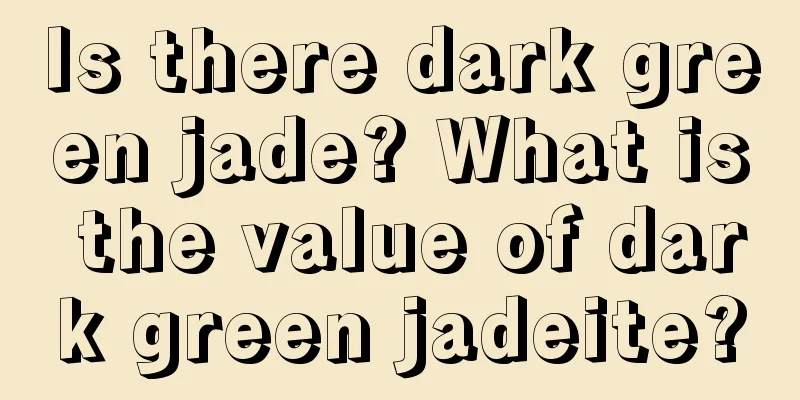A, B, C jade and their identification

|
1. Jadeite optimization processing methods can be divided into two categories. The main optimization methods are: wax dipping and heat treatment. This optimized jade is the same as untreated natural jade and can be regarded as "A-grade" jade. The main processing methods are: bleaching, wax dipping, bleaching, filling, etc. This kind of treated jade is commonly known as "B-grade" jade. Jade that has been dyed is commonly known as "C-grade" jade. 2. Classification of A, B and C jadeite Grade A jade products are natural jade products that have not been processed in any way; Grade B jade products are jade products that have been etched with strong acid and injected with glue; Grade C jade products are jade products that have been artificially dyed; Grade B+C jade products are jade products that have been etched with strong acid + injected with glue + dyed. A-grade jadeite has a variety of colors, many of which are unevenly distributed, and have color roots, a glassy luster, and visible "jade texture" and "orange peel effect" on the surface. It can be identified with the aid of small instruments such as spectroscopes and fluorescent lamps. Identification laboratories can use large instruments such as infrared spectroscopy to detect absorption peaks for identification. B-grade jadeite has a clean base color without any impurities, and a greasy/waxy luster; when observed under magnification, it has a loose structure and acid-etched patterns on the surface; it can be identified with the aid of small instruments such as spectroscopes and fluorescent lamps; identification laboratories can use large instruments such as infrared spectroscopy to detect the absorption peaks of organic matter for identification. The color distribution of C-grade jadeite is relatively uniform. The color floats on the surface and is concentrated between the particles. It has a colorless root and an oily-glassy luster, with concentrated color visible in the cracks. It can be identified with the aid of small instruments such as spectroscopes and fluorescent lamps. Identification laboratories can use large instruments such as infrared spectroscopy to detect absorption peaks for identification. B+C grade jadeite has dull color and oily luster, with the characteristics of both B and C grade jadeite. It can be identified with the aid of small instruments such as spectroscopes and fluorescent lamps. Identification laboratories can use large instruments such as infrared spectroscopy to detect the absorption peaks of organic matter for identification. fcgc66 fcpf18 |
>>: How to identify C-grade jadeite whose color cannot be changed but quality?
Recommend
Who says jadeite collection is priceless? That means you are looking in the wrong direction!
The speed at which jade prices have increased in ...
Unique among jade types
Do you like this kind of jadeite? Black Jade Blac...
What makes a good jade lucky bean?
Jade wealth beans are also called blessing beans,...
I can’t believe the transformation of the jadeite raw stone I bought for thousands of yuan after tinkering with it!
A combination of green emerald and yellow-red jad...
What misunderstandings should we avoid when choosing jadeite?
Nowadays, people's living standards are getti...
Learn to appreciate, the tiny flaws in jade are also beautiful!
Everyone who loves jade wants to own a flawless p...
How to choose jade beans?
What should we pay attention to when choosing luc...
Jade seal: every rise and fall represents integrity; every stroke of the knife is history!
Seals, a unique cultural form, have been passed d...
Revealing the secrets of hand-carved jadeite
A piece of jade rough material needs to go throug...
The jadeite sheet of ordinary quality is
Let me share with you the process of making a pie...
It turns out that jade can be carved like this?
In the jade gambling industry, everyone knows tha...
The custom-made Buddha statue of the zodiac rooster, "Acalanatha", is full of domineering power.
The jade piece I’m sharing today was specially cu...
The elegant and concise jade design is a dialogue with the soul of jade.
Maybe people are like this. As my experience cont...
Jade investment tips and collection
Speaking of jade, I believe most people have one ...
Want to buy jade but afraid of the high price? In fact, you can buy good jade at a low price!
Jade has always given people the impression that ...









